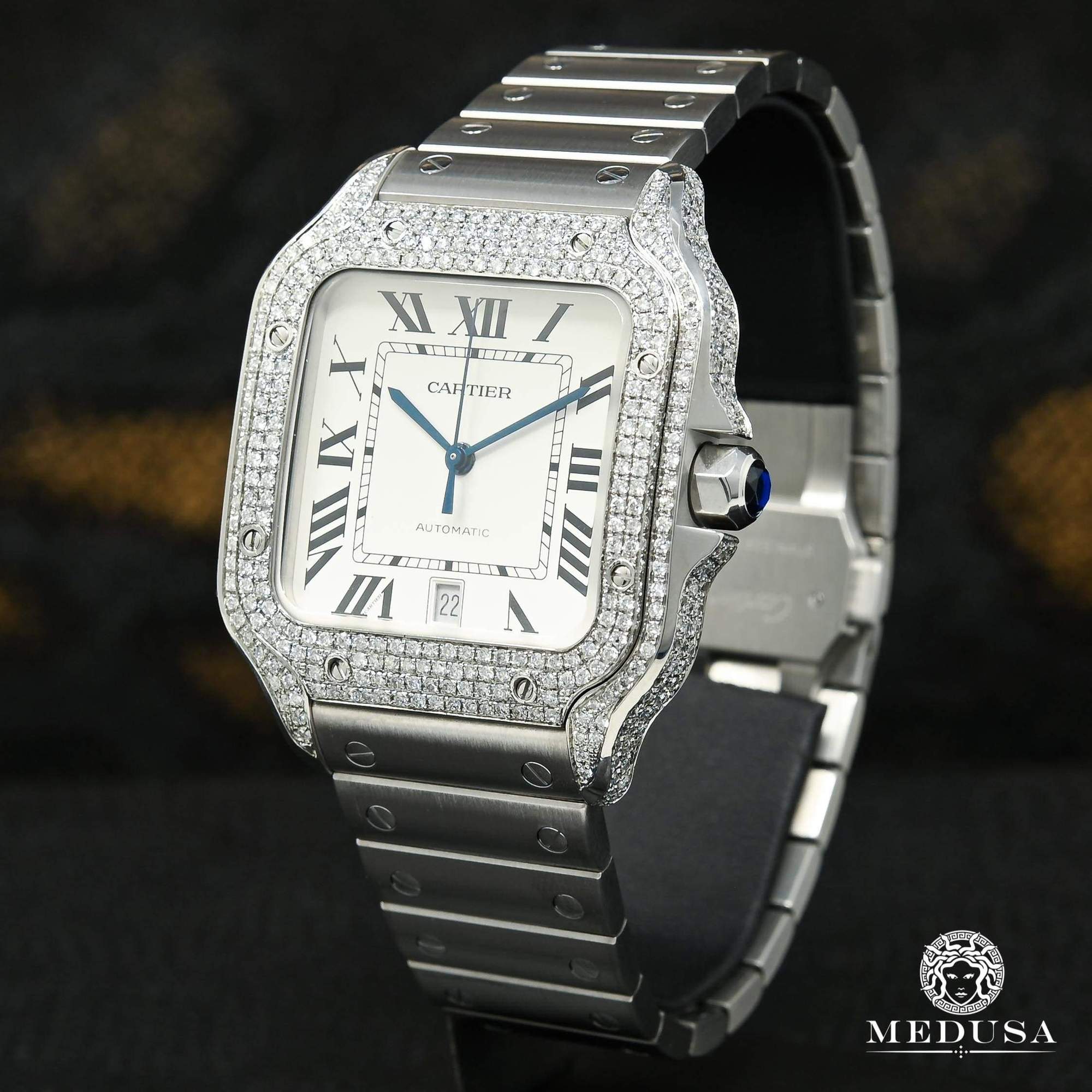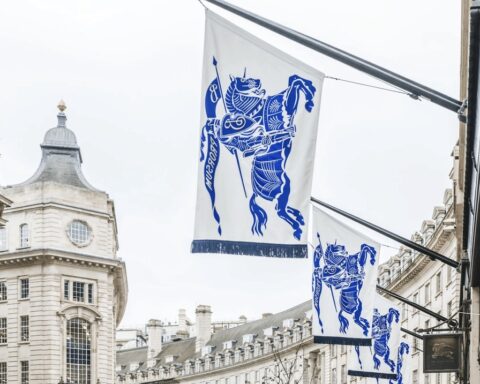[vc_row njt-role=”people-in-the-roles” njt-role-user-roles=”administrator,armember”][vc_column][vc_column_text]
As financial analysts expected, the Swiss luxury giant saw a sharp drop in its numbers in the first half of its lagged fiscal year. Still, experts weren’t expecting the increase of Richemont’s results in the second quarter.
In view of the consequences of Covid-19 on the luxury industry, Richemont forecasted a decline in its revenues of about 30% for the first six months of the staggered 2020-2021 fiscal year, completed in September. According to the press release of Friday, November 6, these predictions are not quite correct: between April and September 2020, the sales of the firm fell by 26% to 5.5 billion euros (or 5.8 billion Swiss francs), which represents a decrease of 25% excluding the effects of changes. In the second quarter alone, the decline was of 5% (or 2% excluding the effects of change) after a decrease of 47% in the first period.
Half-year net profit fell 82% to 159 million euros, while operating profit fell 61% to 452 million euros. Finally, when it was 15.7% a year ago, Richemont’s margin is only 8.3%. That said, these numbers are significantly higher than the expectations of financial experts. According to its forecasts, the Swiss company should have achieved a profit of 5 million, an EBIT of 69 million and revenues of 5.1 billion.
If overall the results announced on November 6 are better than predicted by the analyst René Weber de Vontobel, the latter specifies that obtaining such figures is certainly linked to the new partnership established between Richemont, the Chinese company Alibaba and the internationally renowned fashion website Farfetch. In particular, the jewelry and watch brand Cartier has benefited from the recovery in China, according to general manager Jérôme Lambert. While the jewelry and watchmaking sectors experienced downturns (-18% and -38% respectively), the jewelry division, including in particular the Van Cleef & Arpels brand, returned to growth in the second quarter. In general, sales growth – which started in early August – continued in October, according to CFO Burkhart Grund.
Of course, investors were not indifferent to the announcement of Richemont’s results. At 13:37, the title jumped 7.5% to 68.1 Swiss francs. That said, the analyst from the Cantonal Bank of Zurich (ZKB) calls for caution: while he acknowledges that the results revealed are astonishing news, the expert also notes the lack of visibility of Richemont for the months to come.
Read also > ÉTUDE : LE DÉCLIN DE L’INDUSTRIE HORLOGÈRE
Featured photo: © Montre Cartier[/vc_column_text][/vc_column][/vc_row][vc_row njt-role=”not-logged-in”][vc_column][vc_column_text]
As financial analysts expected, the Swiss luxury giant saw a sharp drop in its numbers in the first half of its lagged fiscal year. Still, experts weren’t expecting the increase of Richemont’s results in the second quarter.
In view of the consequences of Covid-19 on the luxury industry, Richemont forecasted a decline in its revenues of about 30% for the first six months of the staggered 2020-2021 fiscal year, completed in September. According to the press release of Friday, November 6, these predictions are not quite correct: between April and September 2020, the sales of the firm fell by 26% to 5.5 billion euros (or 5.8 billion Swiss francs), which represents a decrease of 25% excluding the effects of changes. In the second quarter alone, the decline was of 5% (or 2% excluding the effects of change) after a decrease of 47% in the first period.
Half-year net profit fell 82% to 159 million euros, while operating profit fell 61% to 452 million euros. Finally, when it was 15.7% a year ago, Richemont’s margin is only 8.3%. That said, these numbers are significantly higher than the expectations of financial experts. According to its forecasts, the Swiss company should have achieved a profit of 5 million, an EBIT of 69 million and revenues of 5.1 billion.
[…][/vc_column_text][vc_cta h2=”This article is for subscribers only.” h2_font_container=”font_size:16″ h2_use_theme_fonts=”yes” h4=”Subscribe now!” h4_font_container=”font_size:32|line_height:bas” h4_use_theme_fonts=”yes” txt_align=”center” color=”black” add_button=”right” btn_title=”I SUBSCRIBE!” btn_color=”danger” btn_size=”lg” btn_align=”center” use_custom_fonts_h2=”true” use_custom_fonts_h4=”true” btn_button_block=”true” btn_custom_onclick=”true” btn_link=”url:https%3A%2F%2Ftest2023.luxus-plus.com%2Fen%2Fabonnements-et-newsletter-2-2%2F|||”]Unlimited access to all the articles and live a new reading experience, preview contents, exclusive newsletters…
Already have an account? Log in.[/vc_cta][vc_column_text]Featured photo: © Montre Cartier[/vc_column_text][/vc_column][/vc_row][vc_row njt-role=”people-in-the-roles”][vc_column][vc_column_text]
As financial analysts expected, the Swiss luxury giant saw a sharp drop in its numbers in the first half of its lagged fiscal year. Still, experts weren’t expecting the increase of Richemont’s results in the second quarter.
In view of the consequences of Covid-19 on the luxury industry, Richemont forecasted a decline in its revenues of about 30% for the first six months of the staggered 2020-2021 fiscal year, completed in September. According to the press release of Friday, November 6, these predictions are not quite correct: between April and September 2020, the sales of the firm fell by 26% to 5.5 billion euros (or 5.8 billion Swiss francs), which represents a decrease of 25% excluding the effects of changes. In the second quarter alone, the decline was of 5% (or 2% excluding the effects of change) after a decrease of 47% in the first period.
Half-year net profit fell 82% to 159 million euros, while operating profit fell 61% to 452 million euros. Finally, when it was 15.7% a year ago, Richemont’s margin is only 8.3%. That said, these numbers are significantly higher than the expectations of financial experts. According to its forecasts, the Swiss company should have achieved a profit of 5 million, an EBIT of 69 million and revenues of 5.1 billion.
[…][/vc_column_text][vc_cta h2=”This article is for subscribers only.” h2_font_container=”font_size:16″ h2_use_theme_fonts=”yes” h4=”Subscribe now!” h4_font_container=”font_size:32|line_height:bas” h4_use_theme_fonts=”yes” txt_align=”center” color=”black” add_button=”right” btn_title=”I SUBSCRIBE!” btn_color=”danger” btn_size=”lg” btn_align=”center” use_custom_fonts_h2=”true” use_custom_fonts_h4=”true” btn_button_block=”true” btn_custom_onclick=”true” btn_link=”url:https%3A%2F%2Ftest2023.luxus-plus.com%2Fen%2Fabonnements-et-newsletter-2-2%2F|||”]Unlimited access to all the articles and live a new reading experience, preview contents, exclusive newsletters…
Already have an account? Log in.[/vc_cta][vc_column_text]Featured photo: © Montre Cartier[/vc_column_text][/vc_column][/vc_row]










